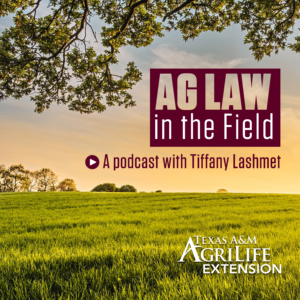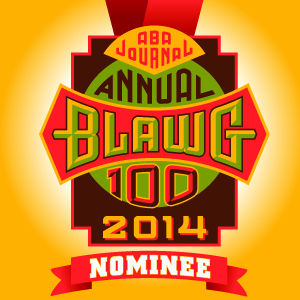In a much anticipated decision from the United States District Court for the District of Idaho, Idaho Code Section 18-7042, which is commonly referred to as an “ag gag law” (hereinafter “the Statute”) has been deemed unconstitutional, specifically violating the Free Speech Clause of the First Amendment and the Equal Protection Clause of the Fourteenth Amendment.
Background
After a secret, undercover investigation by the animal rights group Mercy for Animals was released and showed abuse of cows at an Idaho dairy, a bill was introduced by several ag groups to criminalize certain conduct related to these types of undercover investigation. The bill garnered much support in the Legislature and was quickly passed in 2014 and signed into law by Governor Butch Otter. [Read full statute here.]
The Statute
The Statute makes “interference with agricultural production” a crime, and defines such interference as knowingly doing one of the following: (a) a non-employee enters an agricultural production facility by force threat, misrepresentation or trespass; (b) obtains records of an agricultural production facility by force, threat, misrepresentation, or trespass; (c) obtains employment with an agricultural production facility by force, threat, or misrepresentation with the intent to cause economic or other injury to the operation, livestock, crops, owners, personnel, equipment, buildings, premises, business interests or customers; (d) enters an agricultural production facility without consent and makes an audio or video recording of the conduct of an agricultural production facilities operations; or (e) intentionally causes physical damage or injury to the agricultural production facility’s operations, livestock, crops, personnel, equipment, buildings or premises.
The Statute defines “agricultural production” as “activities associated with the production of animal agricultural products for food, fiber, fuel and other lawful uses” and includes numerous examples, including breeding, hatching, raising, producing, feeding, and keeping livestock, dairy animals, swine, furbearing animals, poultry, eggs, fish and other aquatic species, and other animals, animal byproducts, animal waste, animal compost, and bees, bee products, and bee byproducts. By extension, an “agricultural production facility” is defined as any location being used for agricultural production.
If a person is found guilty of interference with agricultural production, he or she will be convicted of a misdemeanor and could face up to 1 year in jail or a fine of up to $5,000. A person guilty would also be required to make restitution to the victim for twice the amount of value of the resulting damage to the victim.
The Lawsuit
Shortly after the Statute was passed, numerous plaintiffs, including the Animal Legal Defense Fund, joined together to file suit claiming that the Statute was unconstitutional. The plaintiffs argued that the Statute had the purpose and effect of stifling public debate about modern agriculture. Specifically, the plaintiffs claimed that the Statute violated the Constitutional protections of Free Speech and Equal Protection.
The State responded to these claims arguing that the Statute did not violate either provision. The State claimed that the statute was necessary to protect the agricultural industry, including animals, operators, and facilities, from trespassing animal rights activists.
The plaintiffs sought summary judgment–essentially submitting to the court that there were no contested issues of fact and that the court could rule on the case as a matter of law. It was this summary judgment motion from which the court’s decision arose.
Decision
The court found that the Statute violated both the First and Fourteenth Amendments.
First Amendment:
In analyzing a free speech claim under the First Amendment, a court looks at a three part test: (1) the plaintiff must prove that the First Amendment applies to the activity at issue (i.e. is the activity “speech”); (2) the court must then determine which standard of review should apply; and (3) the court determines whether the government’s justification for restricting the speech satisfies the applicable standard.
First, the court easily found that the conduct at issue in this case was, indeed, protected speech.
Second, the court determined that the highest level of legal scrutiny–strict scrutiny–applied to the Statute. The reason for this high level of scrutiny is because the Statute is a “content based restriction.” Here, the court found the Statute intended to prohibit speech critical of animal agricultural practices, while allowing other speech, such as that speech in favor of such practices.
Third, the court ruled that the State’s justification for passing the Statute did not satisfy the strict scrutiny standard. To be valid under strict scrutiny, a law must be “narrowly tailored to promote a compelling Government interest.”
Here, court ruled that the State’s justification for passing the Statute did not satisfy the strict scrutiny standard. On the statutory provisions addressing misrepresentations (parts a-c), the court found that the state failed to prove a compelling government interest. The court stated that there was no proof that the lies the Statute seeks to prohibit would cause harm and that without such harm, there was no compelling interest for the Statute. Additionally, the court found the statute was not narrowly tailored as it prohibited certain speech that was not harmful. For example, the law prohibits any misrepresentation made to gain access to an ag facility, whether or not the person’s access was harmful.
With regard to the statutory provision related to recording (part d), the court found this failed to meet strict scrutiny as well. The court reasoned that the state’s interest in protecting personal privacy and private property in the agricultural industry were not compelling interests. Nor was the Statute narrowly tailored as it was overly broad by prohibiting any video recording of an ag industry, regardless of any fraud or illegality on the part of the person making the recording.
Fourteenth Amendment:
The Equal Protection clause essentially requires the similarly situated persons be treated similarly. Different treatment is allowed only if the applicable level of scrutiny is satisfied. Here, the court discussed both standard scrutiny (requiring differential treatment to be rationally related to a legitimate government interest) and strict scrutiny (narrowly tailored to further a compelling government interest). The court found that the statute satisfied neither.
The court reasoned that the state offered no reason why agricultural operations needed additional protections than other industries. “Protecting the private interests of a powerful industry, which produces the public’s food supply, against public scrutiny is not a legitimate government interest.” Similarly harmful was the fact that the legislative history behind the statute showed a purpose to discriminate against and silence animal welfare groups.
Because the court found the statute unconstitutional, it granted the plaintiff’s motion for summary judgment. It remains to be seen whether the State of Idaho will appeal this decision to the United States Court of Appeals for the Ninth Circuit.
Take Away Points
First, this opinion is certainly a blow for supporters of these types of statutes. Although the opinion is only binding law in Idaho and could certainly be appealed, it is the only published opinion ruling on the constitutionality of this type of statute. Opponents of similar statutes in other states (in particular those involved in the pending litigation over the Utah statute) will surely offer this opinion as persuasive authority that the same ruling should be made with regard to other challenges.
Second, twice the court mentioned that agricultural operations are not left without a remedy at law other than the Statute. Common law claims exist and could be asserted in the undercover video context, including trespass, fraud, theft, and defamation. Additionally, the court pointed out that an agricultural operation could respond with its own public relations campaign to challenge the video. Although the court is correct in these statements, it overlooks two significant issues. First, oftentimes there are reasons why filing civil suits against undercover videographers is not a practical option. For example, lawsuits are time consuming and expensive, oftentimes the videographers leave the state or disappear all together, and many times the videographers do not have sufficient assets to satisfy a judgment even if one could be procured. Second, with regard to launching a media campaign after a video is released, it is difficult–if not impossible–to un-ring the bell after a video has gone public. Farms can spend a great deal of time, money and energy trying to reverse damage done by undercover videos, often to no avail.
Third, with the validity of “ag gag” statutes now in question, agricultural operators should take care to avoid an undercover video investigation on their operation. This includes having in place stringent hiring practices, a vigorous training program, careful monitoring of herd health and employee performance, and a crisis plan in place in the event a situation does arise.












